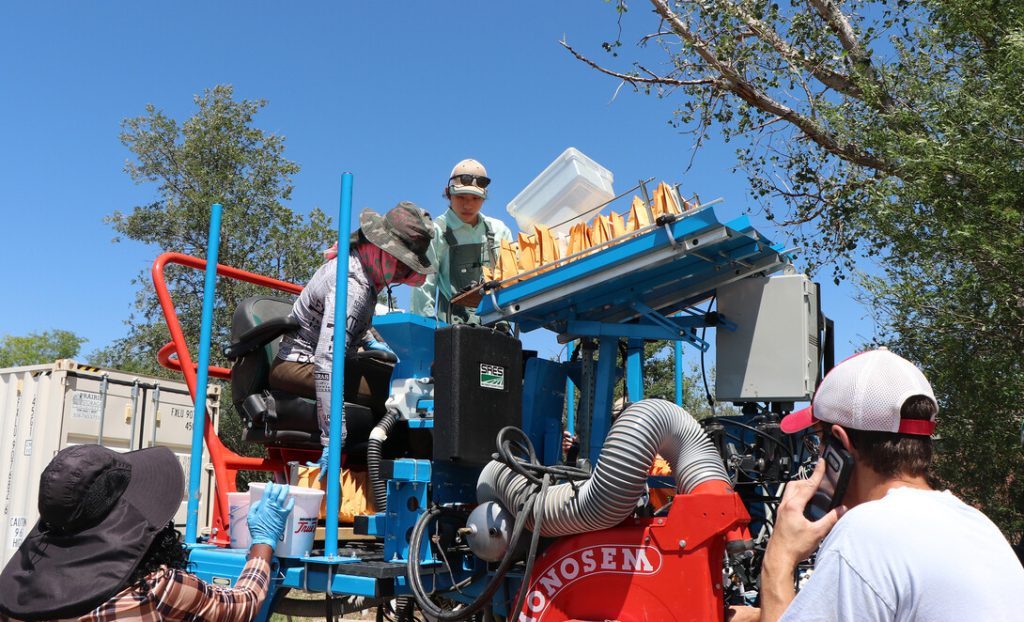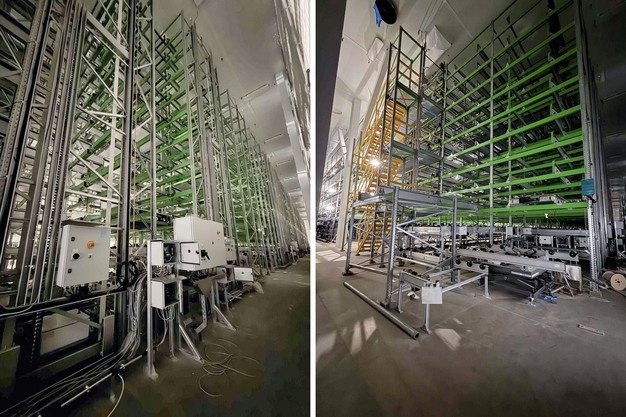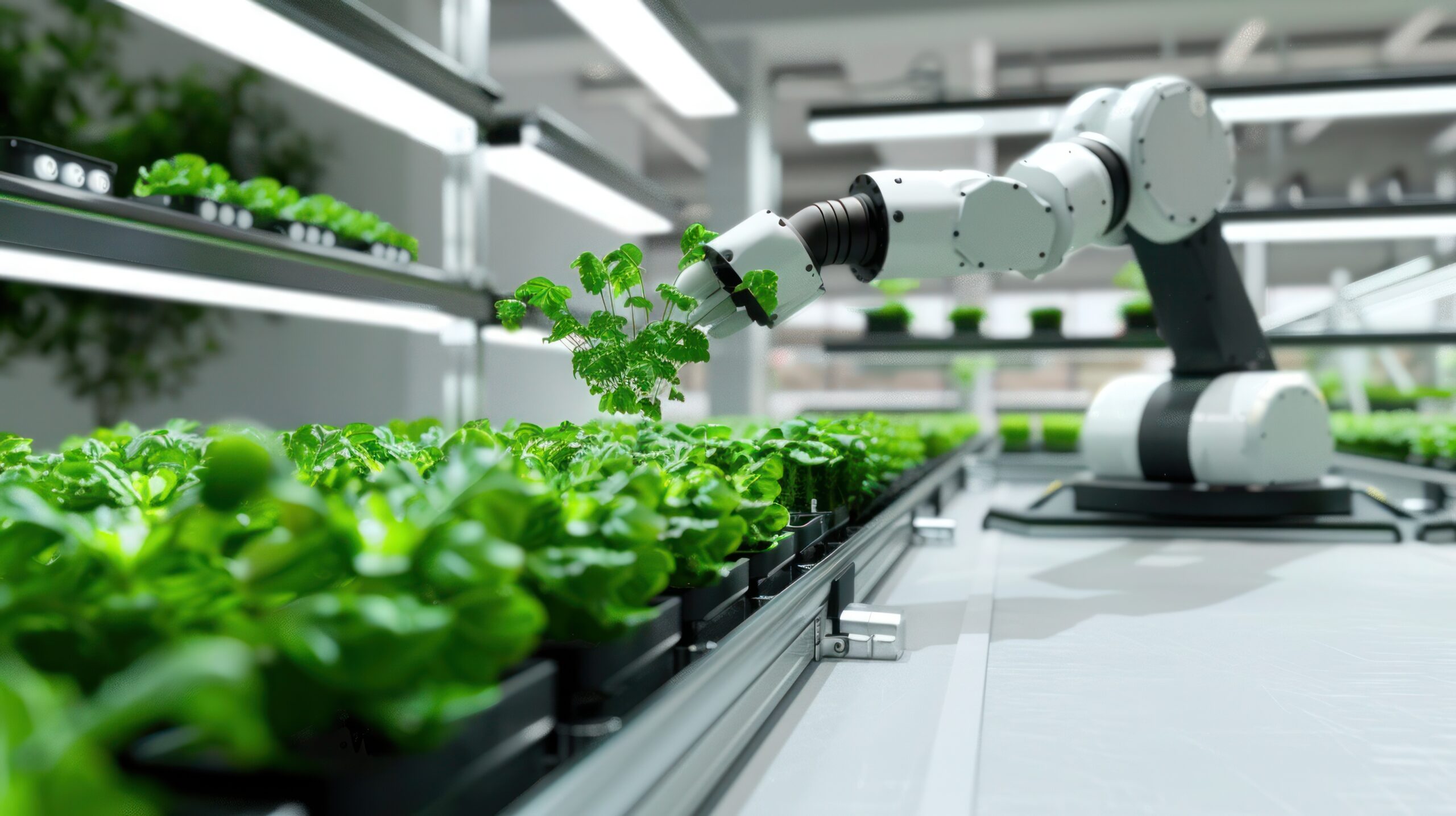Scientific network identifies knowledge needs for resilient ag – Tri-State Livestock News

Report on Knowledge Gaps in North American Agricultural Resilience and Implications for Sustainable Development Goals
Executive Summary: Advancing SDG 2 (Zero Hunger) through Resilience Research
A comprehensive review by the Network for Integrated Agricultural Resilience Research, a North American scientific consortium, has identified critical knowledge gaps concerning the resilience of agricultural systems in the United States, Canada, and Mexico. Led by researchers from the University of Nebraska–Lincoln, the study reveals a significant lack of applied research into core resilience concepts, posing a direct threat to long-term food security and the achievement of Sustainable Development Goal 2 (Zero Hunger). The findings underscore an urgent need to understand agricultural tipping points to prevent systemic collapses, such as the historical Dust Bowl, which could have catastrophic consequences for regional and global food supplies.
Key Findings on Resilience Concepts and Sustainable Production
The investigation, published in the journal Agricultural Systems, systematically reviewed scientific literature, revealing that while the term “resilience” is widely used, its fundamental principles are infrequently applied to agricultural science. This deficit hinders progress toward sustainable food systems.
Analysis of Core Resilience Concepts
The network’s review of 131 relevant papers identified five key concepts of ecological resilience that are insufficiently researched in an agricultural context:
- Heterogeneity: The importance of diversity in systems.
- Scale: The effects of farm size and geographic scope on resilience.
- Regime Shifts: Major, often abrupt, changes in the state of an agricultural ecosystem.
- Thresholds: Tipping points beyond which a system changes into a less desirable state.
- Panarchy: The interplay of resilience cycles across different scales (e.g., from a single field to a regional system).
The Role of Diversity in Achieving SDG 12 (Responsible Consumption and Production) and SDG 15 (Life on Land)
A primary finding was the universal importance of heterogeneity. Every paper that assessed diversity concluded that systems with greater diversity were more resilient to disturbances. This directly supports:
- SDG 12: Promoting sustainable production patterns through diversified agriculture, including varied crops, animal breeds, and markets.
- SDG 15: Protecting terrestrial ecosystems by fostering biodiversity within agricultural landscapes, which enhances their ability to function and persist.
In contrast, other concepts were found to be poorly understood. For instance, panarchy, a more abstract concept, was addressed in only 14 papers, indicating a deep knowledge gap in understanding how shocks propagate across scales.
Addressing Gaps in Socio-Ecological Systems and Climate Action (SDG 13)
The research highlights a critical failure in much of the existing literature: the separation of social and ecological components. The study emphasizes that system collapses are often driven by the complex interplay between human activity and environmental conditions. Understanding these interactions is fundamental to building resilience against climate-related shocks like drought, a key component of SDG 13 (Climate Action).
- Regime Shifts and Thresholds: The review found only 33 papers on regime shifts and 37 on thresholds. This lack of research means that many agricultural systems may be approaching critical tipping points without the knowledge needed to prevent a shift to a less productive or collapsed state.
- The Human Factor: Researchers noted that studies incorporating both social and ecological dynamics often yielded unexpected findings, as system failure could not be attributed to either factor in isolation.
Strategic Recommendations and Partnerships for the Goals (SDG 17)
The Network for Integrated Agricultural Resilience Research, itself an example of SDG 17 (Partnerships for the Goals) by uniting institutions like the USDA-ARS Long-Term Agroecosystem Research Network and Canadian research bodies, has outlined a strategic path forward. These actions are designed to fill the identified knowledge gaps and bolster the sustainability of North American agriculture.
- Focused Research Initiatives: Establish working groups to concentrate on key areas, such as heterogeneity and crop-rotation diversity, and seek funding to analyze vulnerable systems like the Florida citrus industry and the Washington-British Columbia apple industry.
- Historical Analysis for Future Preparedness: Utilize historical examples of agricultural collapse to identify key drivers and apply these lessons to modern systems that may be exhibiting early signs of vulnerability.
- Standardization of Terminology: Collaborate with institutions such as the USDA National Agricultural Library to develop consistent definitions for resilience terms, fostering clearer and more effective cross-disciplinary research.
- Community-Wide Scientific Engagement: Disseminate findings to inspire other scientists to explore these under-researched topics, thereby accelerating the collective understanding of agricultural resilience.
Analysis of Sustainable Development Goals in the Article
1. Which SDGs are addressed or connected to the issues highlighted in the article?
- SDG 2: Zero Hunger: The article’s central theme is the resilience of agricultural systems, which are fundamental to food production and security. The fear of a catastrophic collapse, “akin to the ignorance that created the Dust Bowl,” directly relates to ensuring a stable food supply.
- SDG 13: Climate Action: The article mentions the need for agricultural systems to be resilient to disturbances, specifically citing “drought.” This connects to strengthening resilience and adaptive capacity to climate-related hazards and natural disasters.
- SDG 15: Life on Land: The research heavily relies on concepts of ecological resilience, such as heterogeneity (diversity), regime shifts, and the interplay between social and ecological systems. The reference to the Dust Bowl as a major change “in the state of an agricultural ecosystem” and the goal of preventing such degradation links directly to protecting terrestrial ecosystems and halting land degradation.
- SDG 17: Partnerships for the Goals: The article describes a collaborative effort, the “Network for Integrated Agricultural Resilience Research,” involving scientists from the United States, Canada, and Mexico. It is funded by the National Science Foundation and includes various other networks, exemplifying a multi-stakeholder partnership to advance scientific knowledge for sustainable development.
2. What specific targets under those SDGs can be identified based on the article’s content?
- Target 2.4: By 2030, ensure sustainable food production systems and implement resilient agricultural practices that increase productivity and production, that help maintain ecosystems, that strengthen capacity for adaptation to climate change, extreme weather, drought, flooding and other disasters and that progressively improve land and soil quality. The entire article is focused on assessing and improving the resilience of agricultural systems to avoid collapse and maintain function, which is the core of this target.
- Target 2.5: By 2020, maintain the genetic diversity of seeds, cultivated plants and farmed and domesticated animals and their related wild species… The article explicitly states that the reviewed papers “considered diversity in crops planted, animal breeds, markets, producers, insurance and so on,” which is a key component of maintaining genetic diversity for resilience.
- Target 13.1: Strengthen resilience and adaptive capacity to climate-related hazards and natural disasters in all countries. The research aims to fill knowledge gaps on how to keep agricultural systems resilient to disturbances, with the article specifically mentioning the historical example of a “drought” contributing to the Dust Bowl.
- Target 15.3: By 2030, combat desertification, restore degraded land and soil, including land affected by desertification, drought and floods, and strive to achieve a land degradation-neutral world. The article uses the Dust Bowl, a period of severe dust storms causing major ecological and agricultural damage, as a key example of a “regime shift” and a “collapse” that future research should help prevent.
- Target 17.6: Enhance North-South, South-South and triangular regional and international cooperation on and access to science, technology and innovation… The article details a “North American scientific network” (USA, Canada, Mexico) created to address knowledge gaps in agricultural science, which is a direct example of regional scientific cooperation.
- Target 17.16: Enhance the global partnership for sustainable development, complemented by multi-stakeholder partnerships that mobilize and share knowledge… The “Network for Integrated Agricultural Resilience Research” is described as a partnership funded by the National Science Foundation and including entities like the “USDA-ARS Long-Term Agroecosystem Research Network” and “ResNet of Canada,” demonstrating a multi-stakeholder partnership sharing knowledge.
3. Are there any indicators mentioned or implied in the article that can be used to measure progress towards the identified targets?
- Level of heterogeneity/diversity in agricultural systems: The article states, “The more diversity the system had, the more resilient it was to disturbances.” Measuring the diversity of “crops planted, animal breeds, markets, [and] producers” serves as a direct indicator of resilience (relevant to Target 2.4 and 2.5).
- Number of scientific studies on agricultural resilience: The article is based on a literature review that found “knowledge gaps” and a low number of papers applying resilience concepts to agriculture. An increase in the number of publications would indicate progress in filling these gaps. The article notes that of 100,000 papers using the word “resilience,” “far fewer used basic concepts of ecological resilience and applied them to agriculture.” (Relevant to all identified targets).
- Occurrence of agricultural regime shifts or collapse: The research aims to understand and prevent catastrophic events like the Dust Bowl. Tracking the stability of vulnerable agricultural systems, such as the “Florida citrus industry” or “Washington-British Columbia apple industry,” and avoiding negative “regime shifts” would be a key measure of success (Relevant to Target 15.3 and 2.4).
- Number and funding of multi-stakeholder research networks: The existence of the “Network for Integrated Agricultural Resilience Research,” funded by the “National Science Foundation,” is presented as a mechanism for progress. The creation and funding of similar collaborative networks can be used as an indicator of partnership effectiveness (Relevant to Target 17.6 and 17.16).
4. Summary Table of SDGs, Targets, and Indicators
| SDGs | Targets | Indicators Identified in the Article |
|---|---|---|
| SDG 2: Zero Hunger |
2.4: Ensure sustainable food production systems and implement resilient agricultural practices.
2.5: Maintain the genetic diversity of seeds, cultivated plants and farmed and domesticated animals. |
Level of heterogeneity/diversity in agricultural systems (e.g., “diversity in crops planted, animal breeds, markets”). |
| SDG 13: Climate Action | 13.1: Strengthen resilience and adaptive capacity to climate-related hazards and natural disasters. | Number of scientific studies on agricultural resilience to disturbances like drought. |
| SDG 15: Life on Land | 15.3: Combat desertification, restore degraded land and soil… and strive to achieve a land degradation-neutral world. | Occurrence of agricultural “regime shifts” or collapse (e.g., avoiding another “Dust Bowl”). |
| SDG 17: Partnerships for the Goals |
17.6: Enhance regional and international cooperation on and access to science, technology and innovation.
17.16: Enhance the global partnership for sustainable development… complemented by multi-stakeholder partnerships. |
Number and funding of multi-stakeholder research networks (e.g., the “Network for Integrated Agricultural Resilience Research” funded by the “National Science Foundation”). |
Source: tsln.com

What is Your Reaction?
 Like
0
Like
0
 Dislike
0
Dislike
0
 Love
0
Love
0
 Funny
0
Funny
0
 Angry
0
Angry
0
 Sad
0
Sad
0
 Wow
0
Wow
0









































































